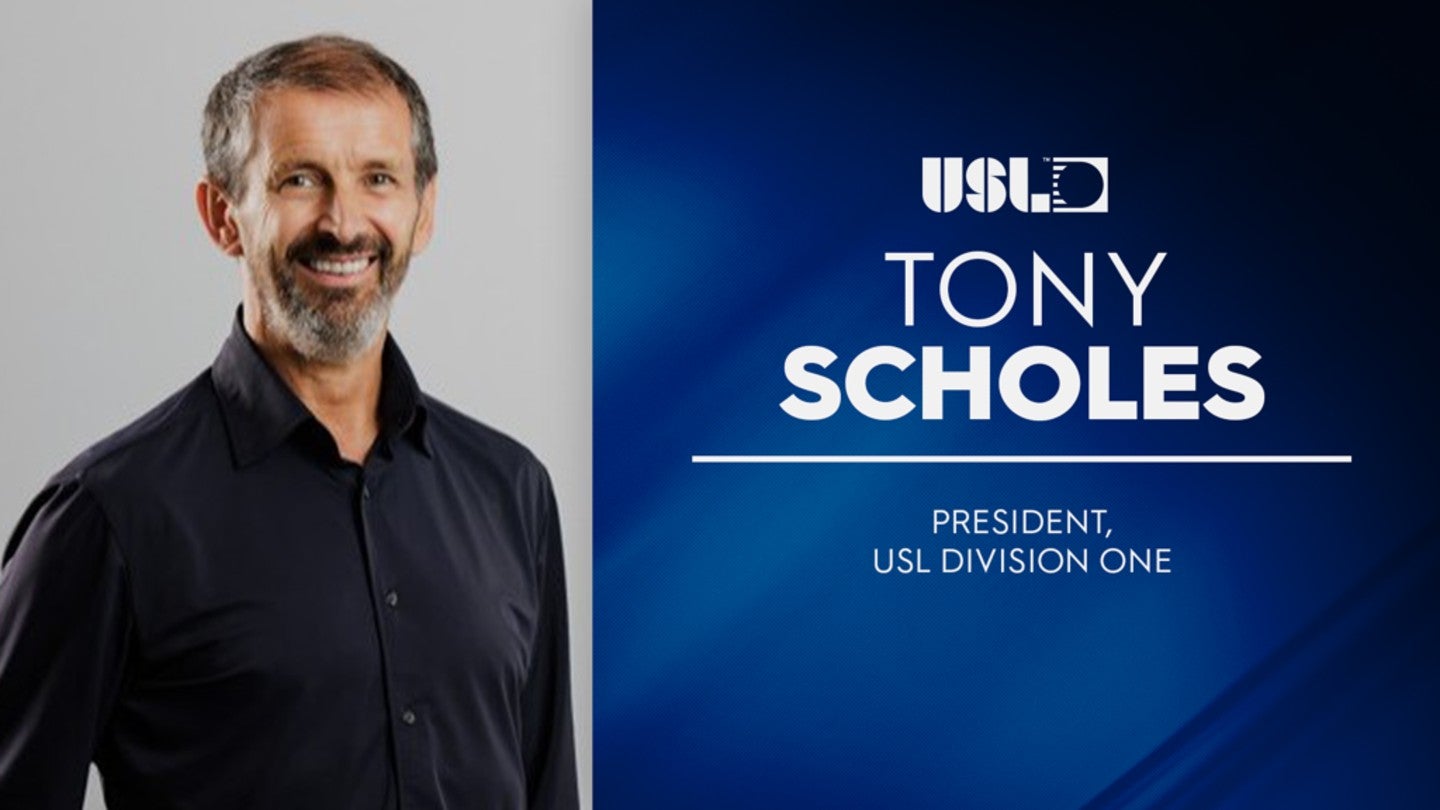
US soccer’s USL competition has, amid preparations to launch a division one designated top-flight in competition, officially confirmed the appointment of Tony Scholes as the president of that upcoming first division.
Scholes joins from English soccer’s elite Premier League, perhaps the world’s most prominent domestic soccer competition, where he had been chief football officer since 2021.

Discover B2B Marketing That Performs
Combine business intelligence and editorial excellence to reach engaged professionals across 36 leading media platforms.
The Englishman will begin in his post at the USL after seeing out the current 2025-26 Premier League season, which will run through May 24, 2026, and upon joining the league, will oversee the establishment of its as-yet unnamed top flight.
This will include leading the creation of the new USL league structure and its long-term development aspirations.
Speaking on the appointment, USL chief executive, Alec Papadakis, commented: “Tony Scholes is a proven leader with experience at the highest levels of the global game.”
“The Premier League is the most-watched soccer league in the world, followed by billions of fans in more than 200 countries, and Tony has been responsible for the football operations of the league while also leading a club.

US Tariffs are shifting - will you react or anticipate?
Don’t let policy changes catch you off guard. Stay proactive with real-time data and expert analysis.
By GlobalData“He brings unmatched credibility and perspective as we build our Division One league and introduce promotion and relegation in U.S. professional soccer. His appointment marks another major step forward for the USL and underscores the confidence and momentum behind what we’re building.”
Scholes was attracted to the job, at least in part, by USL president Paul McDonough, a former soccer agent, who had a relationship with Scholes back when he was chief executive of English side Stoke City, a role he held for 17 years.
Division One will sit at the top of the USL’s pyramid, with the second-tier USL Championship and third-tier League One, as well as the semi-pro USL League Two and USL Youth leagues beneath.
Upon launch, the USL’s tiered system will allow for the promotion and relegation of clubs in the long term, as well as a pathway for talent progression (MLS, by comparison, operates a closed league).
While it is unclear what the composition of the new league will be, US Soccer requires a Division One league to have at least 12 teams located across the country (Eastern, Central, and Pacific time zones) with at least 75% of teams playing in a market of a minimum of one million people.
All venues must also be enclosed and have a minimum seating capacity of 15,000, with the league demonstrating financial viability.
The USL expects certain clubs competing in its Championship division to step up, but will also be in conversations with potential new owners.
The new owners, however, must meet the USL’s strict financial criteria, which include a principal owner having at least a 35% stake in the team and whose net worth is at least $40 million, or a group of owners whose combined net worth is at least $70 million.
The USL operates a different model than MLS in that the club owners run the teams as a separate business, while MLS uses the single-entity model, where team owners are league partners.
USL launched in 1986 to promote a talent pathway for men and women under one system across the US. It has grown to comprise 24 USL Championship clubs, 14 USL League One teams, and 144 League Two sides, split into 19 regional divisions.
Recently, BellTower Partners, the private equity firm, acquired a minority stake in the USL, and, as part of the investment deal, BellTower founder Kewsong Lee joined the USL board of directors as vice chair.
Lee founded BellTower in 2023 after previously serving as CEO of The Carlyle Group investment firm from 2018 to 2022.
Since then, the company has taken ownership stakes across several industries, including Patricof Co, a private investment and advisory firm focused on elite athletes and the broader sports asset class.
Read more: All to play for: How the United Soccer League upped its game





